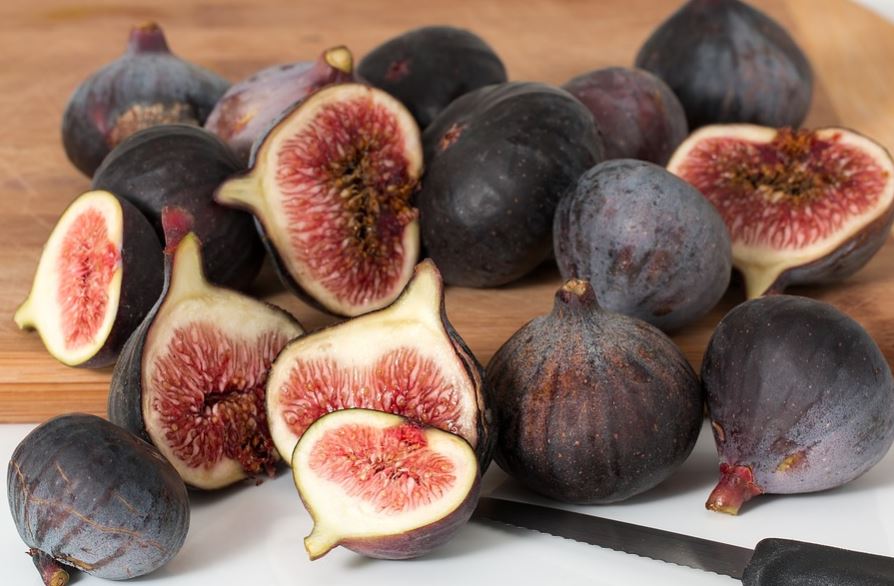Can you freeze fresh figs without ruining them?
Figs are a delectable fruit, if you’ve had the chance to taste it and are a fan, then you will probably ask yourself, can you freeze fresh figs? So, if you are looking for a way to keep figs around for a while then keeping them frozen is what you should do.
If you love figs, you’ll most likely want to keep them in stock, especially during days when they are hard to find. Keeping your figs frozen allows for longer storage, this way resolving your fig cravings. This tasty fruit can be enjoyed plain, added on top of salads, or mixed with some of your recipes.
Now that you know that you can freeze fresh figs, it’s time to learn about the actual process. Contrary to what you may think, the process is simple but it does require a few key steps. Keep reading and learn how you can freeze fresh figs, important tips, and more.
Can you Freeze Fresh Figs FAQs
Do fresh figs last long?
Due to their sugar content, fresh figs do not last very long when they have ripened. Figs cannot be kept long over the counter, they could last for 2-5 days. When refrigerated, figs could be stored for up to 7 days.
How can fig last longer?
You can preserve figs before storing them to make them last for months by freezing them. If frozen, fresh figs could be kept for 6-8 months.
Will frozen figs taste the same?
You can freeze fresh figs immediately, or you can first preserve them in syrup as a more secure way of storing your figs. However, frozen figs will not taste the same as fresh ones, and their texture will also change.
How to know when figs have gone bad?
You can easily identify when fresh figs have gone bad when they produce a foul smell. You may notice a white powdery form appearing on the figs, but these could just be its natural sugars. However, you must also be cautious of mold growing on them.
Things to know about freezing figs
- Freezing figs would cause them to change the texture. When they are thawed, they turn soft or mushy. However, keeping them frozen is still the best choice for longer storage.
- When storing them, be sure to add some citrus acid to help keep them looking good.
- Cutting figs into quarters before freezing them enables a faster thawing time than leaving them whole.
- You should wash figs before freezing and peel off the skin if desired.
- If your final goal is a jam or sauce, you may want to peel your figs before freezing.
- Figs produce ethylene gas that causes others to deteriorate faster, for this reason, is recommended not to place figs near other fruits and vegetables in your storage area.
- When freezing fresh figs, it is highly recommended to pick those that are soft but not mushy.
- Figs must be picked ripe from trees because they do not ripen once they have been picked.
- Keep the figs in a separate container or put them at the back of your fridge or freezer.
How Can you Freeze Fresh Figs
There are two ways in which you freeze your figs:
- Place them directly into the freezer
- Preserve figs in sugar syrup and then freeze them, also known as the sugared freezer method.
Steps to freeze figs:
- Using cool water, wash your figs. Make sure not to choose the figs that are overripe because they do not freeze well.
- Cut figs into quarters before freezing them. This step will help you to use them in smoothies and ice creams without putting too much stress on your blender.
- Get some paper towels, pat them dry, and lay them on a baking sheet with the paper lining.
- Transfer the baking sheet to the freezer until the figs have frozen.
- Place the figs in airtight freezer bags.
- It is good to label the bags with the date you got the fig and then place them back in the freezer.
Steps to can figs:
- Using cool water, wash your figs. Make sure not to choose the figs that are overripe because they do not freeze well.
- Boil the figs in syrup for 5 minutes.
- Place the figs in canning jars and add 2 tablespoons of your choice of acid.
- Pour in the syrup to submerge the figs.
- Seal well, and then place them in the freezer.
Fig Facts
- Though figs are widely regarded as a fruit, figs are actually flowers turned inward: The small, soft seeds inside are the real fruit.
- Figs grow in warm climates and prefer hot, dry summers.
- Figs can also be used as potted plants or small ornamental trees.
- Whit the right conditions, they can quickly grow to 30 feet tall.
Frozen figs recipes
Frozen figs are fantastic in baked goods and smoothies, jam, homemade ice cream, fruit sauce,s and fruit syrups.
Fig and Honey Galette

Ingredients:
1 ¼ cups all-purpose flour
½ cup whole wheat flour
2 tablespoons white sugar
1 teaspoon salt
1 ½ sticks cold unsalted butter, cubed
¼ cup ice water
1 tablespoon lemon juice
Directions:
- Mix flours, sugar, and salt in a food processor. Add butter and process until mixture is crumbly with some pea-sized pieces. Drizzle with water and lemon juice; pulse a few more times. Wrap in plastic wrap and allow to chill for 1 hour.
- Unwrap dough; let stand for 5 to 10 minutes. Place on a floured piece of parchment paper and roll out into a 13-inch circle about 1/4-inch thick.
- Stir in egg yolk, honey, mascarpone, and vanilla. Spread onto the dough, leaving a 2-inch border. Arrange figs in concentric circles on top, alternating light, and dark figs if using a mixture.
- Preheat the oven to 375 degrees F. Bake in the preheated oven until the crust is golden.
Fresh Figs and Chicken Thighs

Ingredients:
8 skinless, boneless chicken thighs
salt and ground black pepper to taste
3 tablespoons extra-virgin olive oil
10 fresh figs, stemmed and quartered
1 ½ cups chicken broth
¼ cup balsamic vinegar
1 large shallot, sliced lengthwise
1 tablespoon minced fresh rosemary
Directions:
- Pat chicken thighs dry and season both sides with salt and pepper.
- Heat olive oil in a large skillet, add chicken thighs, and cook, for 3 to 4 minutes on each side.
- Add figs, chicken broth, balsamic vinegar, and shallot. Bring contents to a boil and let simmer until chicken thighs are cooked.
- Transfer thighs to a serving plate and keep warm. Add minced rosemary to the skillet contents, increase heat to medium-high, and allow contents to come to a full boil to create the reduction. Serve warm.
Bananas tend to go bad fast, if you don’t want to freeze you can also keep them fresh with a Banana Keeper.

